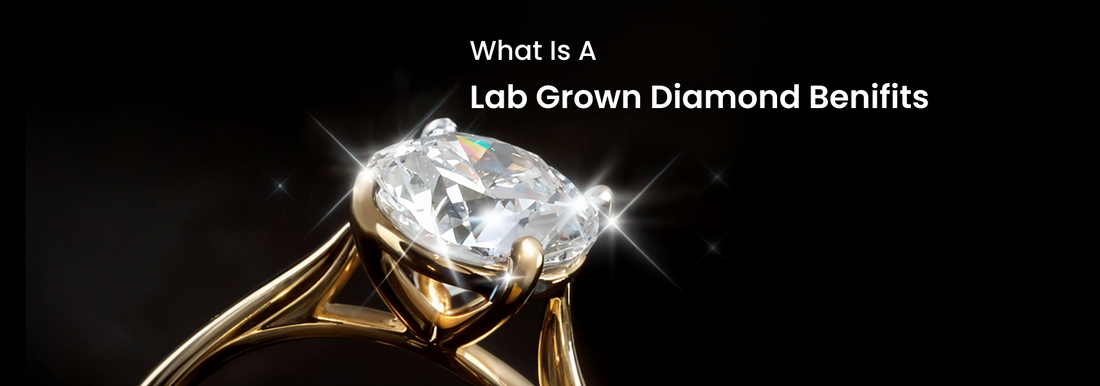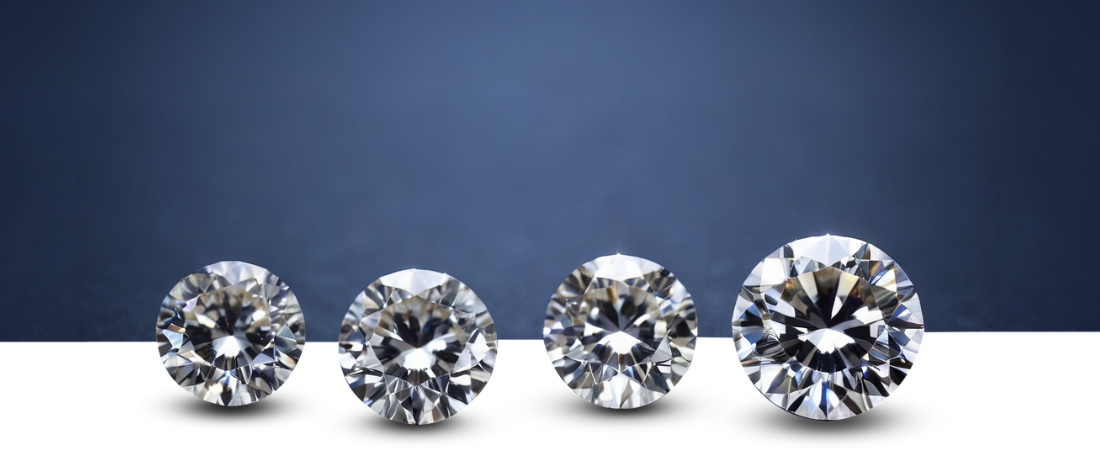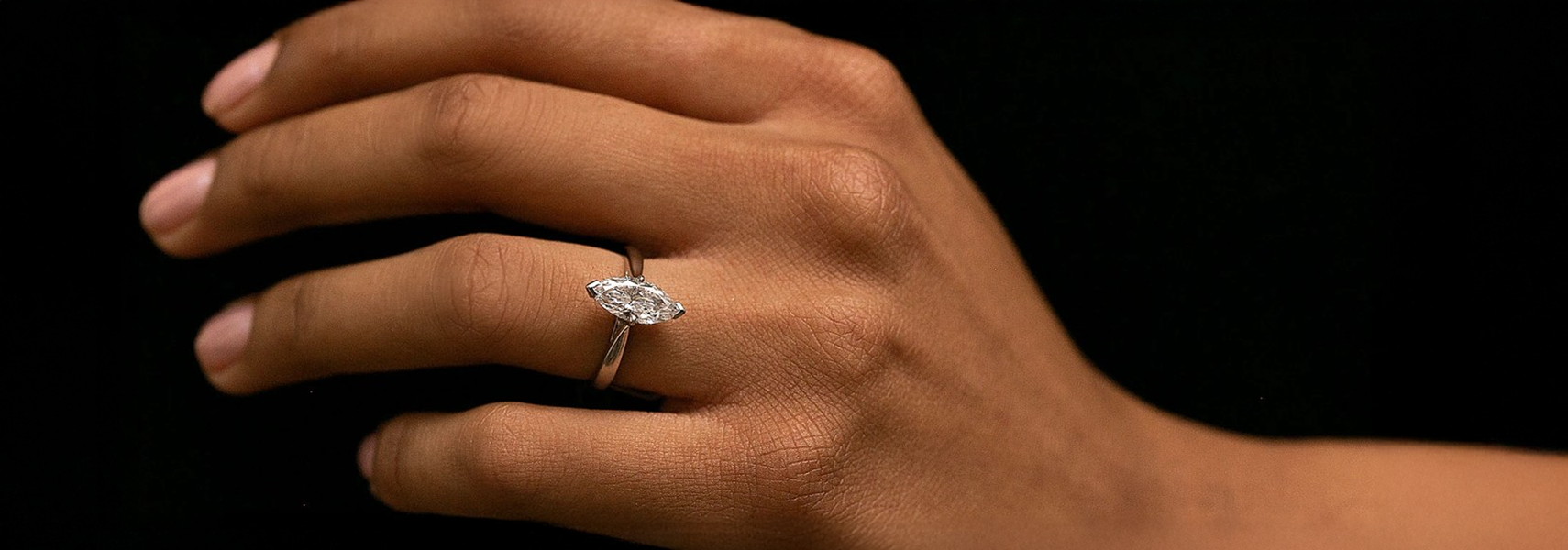Compared to diamonds that are mined, lab grown diamonds have many advantages. Since they don't contribute to the environmental damage or human rights problems frequently associated with conventional diamond mining, they are ethically sourced. IGI lab grown diamonds are genuine diamonds that are produced in a controlled lab crystal structure and the chemical addition of these diamonds is identical to those of real diamonds.
They are created by mimicking the natural diamond creation process through the use of chemical vapor deposition and high temperature techniques. Lab grown diamonds are a sustainable and moral option because they are less expensive and more environmentally friendly than mined diamonds.
What are Lab Grown Diamonds?
What is a lab grown diamond? Lab grown diamonds are real diamonds produced in a managed environment. They are grown in two ways: a high pressure and high temperature process that mimics their natural formation on the Earth or a chemical vapor deposition process. Both methods produce lab created diamonds that are exactly like mined diamonds, starting with a pure carbon seed arranged in a crystalline form. Rare exotic colors and colorless ranges are available for lab grown diamonds.
Lab Grown Diamonds: The Short Version
These diamonds are virtually identical to natural diamonds both in chemical composition and appearance. Because of decreased manufacturing costs the lab grown diamonds are frequently less expensive than real diamonds.  The lab grown diamond wedding bandslab grown diamond wedding bands are the best choice for customers worried about concerns like conflict diamonds.
The lab grown diamond wedding bandslab grown diamond wedding bands are the best choice for customers worried about concerns like conflict diamonds.
How Are Lab Diamonds Made?
Many have a doubt about how are lab-grown diamonds made. Chemical Vapor Deposition and High Pressure High Temperature are the two main processes used to manufacture lab diamonds.
· CVD Method
The CVD method involves placing a tiny diamond seed in a vacuum chamber that is loaded with gases that are rich in carbon, usually methane. When these glasses are heated, they disintegrate. After that, the carbon atoms form a link with the seed and develop into diamonds layer by layer. CVD diamonds are a common choice for gemstones since they are frequently easier to manage in terms of size and quality.
· HPMT Method
The HPHT Method replicates the natural circumstances that lead to the formation of diamonds deep within the Earth. The carbon crystallizes around the seed in this harsh environment creating a diamond. Though it may also produce gem quality stones, HPHT is frequently employed to make diamonds for regular usage.
Both techniques yield diamonds with the same physical characteristics and chemical addition as those extracted from the earth. The primary distinction between the two is where they come from the lab created diamonds may be produced in a few weeks but natural diamonds take millions of years to form.
Why Are Some Diamonds Colored?
The diamonds can have a wide range of colors from delicate tints to vivid hues. The elements and structural defects in the crystal grid that change the way light interacts with the stone mostly determine the color of a diamond. The trace components that change the hue of the diamond are responsible for the most prevalent colored diamonds. Diamonds can become yellow or brown due to nitrogen atoms.
The most widely used color spectrum for diamonds is this one which is frequently categorized using the Gemological Institute of America scale that runs from pale yellow to deep brown. The blue appearance of diamonds can be caused by other elements such as boron. The color of blue diamonds is made by boron atoms in the crystal structure that only reflect blue.
Structural flaws in the crystal lattice can give diamonds their tone. In certain instances, the diamond's inherent structure may permit a graining effect in which the stone appears green or purple due to planes of imperfection. Depending on the light source these colors are frequently uncommon and in high demand can alter in intensity or even change.
Apart from these inherent color factors, the diamonds can also be treated to improve or alter their hue. A diamond color can be intensified via high temperature and irradiation treatments which can change a light brown diamond into a more intense color or a pale yellow diamond into a vibrant canary yellow. Colored diamonds particularly those with distinctive colors are very rare and expensive and their prices usually exceed those of colorless diamonds.
Why Choose Lab Created Diamond Rings
The lab created diamonds are a great option for fine jewelry and engagement rings. The latest technology used to grow these diamonds mimics the natural diamond creation process and produces stones that are chemically and optically identical to diamonds that are mined. The ethical origin of lab created diamonds is a major factor in the decision.
Lab grown 3kt diamond is devoid of conflict and created in controlled circumstances that guarantee responsible sourcing which may be connected to environmental damage and unethical labor practices. Affordability is still another important advantage. Customers can select the best quality stones within their budget because lab created diamonds are usually 20–40% less expensive than their mined counterparts.
Compared to traditional mining which disturbs ecosystems and uses a lot of energy, these diamonds have a lesser environmental impact because they take fewer resources to create. Another compelling argument in favor of lab created diamond rings is their quality and variety. They offer remarkable clarity and brilliance and come in a variety of sizes and colors. Lab created diamonds offer a beautiful and sustainable substitute for real diamonds that guarantee beauty without sacrificing quality.
Are Lab Diamonds ‘Fake Diamonds’?

Are lab grown diamonds real diamonds? Indeed. Lab grown diamonds are real diamonds they have the same chemical and visual qualities as natural diamonds. The main distinction is in their origin. Natural diamonds form millions of years beneath the Earth's surface whereas lab diamonds are manufactured in a controlled setting using advanced technology.
There are two primary ways for producing lab diamonds. The high pressure, high temperature, and chemical vapor deposition. Both procedures mimic the conditions under which natural diamonds develop and produce stones that are nearly indistinguishable from mined diamonds without specialist equipment.
Are lab grown diamonds real? Yes, they have the same physical and chemical characteristics as actual diamonds since they are composed of the same substance. Unlike diamond simulants which look like diamonds but have different compositions the lab grown diamonds are formed of pure carbon organized in a crystal lattice much like their natural counterparts.
Their longevity and brilliance are identical. Affordability and ethical sourcing are just a few benefits of lab-created diamonds. They have a smaller environmental impact and reduce worries about conflict diamonds. Although some contend that mined diamonds are more valuable and rarer, the notion that lab-created diamonds are fake is false. Just grown differently, they are genuine diamonds.
Are Lab Grown Diamonds Ethical and Sustainable?
An ethical and sustainable substitute for diamonds extracted from mines is lab grown diamonds. Lab grown diamonds are produced in controlled environments utilizing the latest technological procedures, in contrast to traditional diamond mining which frequently entails environmental damage and human rights issues.
The traceability of lab grown diamonds is one of their main ethical benefits. Conflict diamonds which fund exploitation and bloodshed in some areas have long been linked to traditional diamond mining. Since lab grown wedding bands are created without these moral conundrums, buyers can buy them with confidence.
Another important consideration is sustainability. Extensive land excavation and energy use are all necessary for mining, which frequently results in habitat damage and deforestation. Lab grown diamonds are a more environmentally responsible option because they require fewer natural resources and may be fueled by renewable energy sources. The production process's energy intensive nature must be taken into account as it still affects the environment.
All things considered, lab-grown diamonds make a strong case for sustainable and moral luxury. They are gradually becoming the go-to option for people who value responsibility and beauty because of ongoing technological developments and rising customer demand.
Conclusion
Vana Jewels creates its diamonds using the latest technology that guarantees that you will receive premium stones that complement contemporary tastes and fashions. Selecting a lab created diamond necklace from Vana Jewels is a beautiful and sustainable choice that is ideal for celebrating life's important occasions. Vana Jewels is the best place to buy lab grown diamond rings. Each piece exemplifies artistry that combines traditional and contemporary aspects to produce unique jewelry that appeals to clients. Visit Vana Jewels and make your purchase today!
FAQs?
Are Lab Made Diamonds are Genuine Diamonds?
Yes. Lab grown diamonds are real diamonds. They share the same carbon structure as mined diamonds and have identical optical and chemical qualities.
Do Lab Grown Diamonds Need to Be Cut?
Cut is the most important factor in diamonds because it gives them the ability to disperse light.
Are There Different Types of Lab Grown Diamonds?
Yes. There are variations based on color and clarity just like natural diamonds.
Is Lab Made Diamonds Worth the Investment?
Indeed. It is worth the investment.
Do Lab Grown Diamonds Get Cloudy?
Lab made diamonds typically have good clarity. Like the best quality natural diamond, the lab made diamonds have better clarity.










